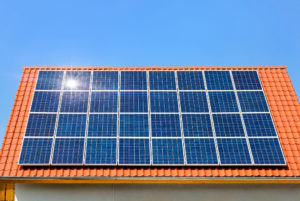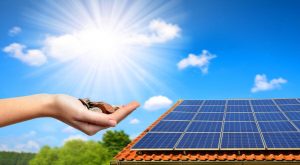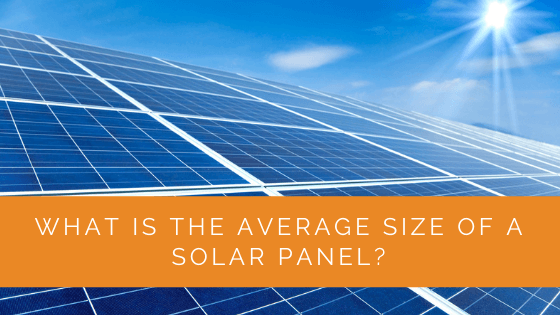With the rise in global warming, people across the globe are slowly shifting to more sustainable energy sources. People are turning environmentally conscious and are opting for more energy-efficient technology.
Solar energy is one of the cleanest and readily available energy sources. Apart from being environment friendly, this source of energy is pocket-friendly as well. With an abundance of energy to offer, solar power is the state-of-the-art trend for harnessing energy and producing cost-effective electricity.
Solar panels have become a common sight in a majority of buildings today to produce electricity. These power channels are not just best-suited for our mother earth and are available in various sizes that best suit your roof.
So are you planning on investing in one of these too? How many solar panels would you need for your rooftop? To get a clearer picture, let us delve deeper into this concept.
Contents
- 1 Key Takeaways
- 2 Why Do You Need a Solar Panel?
- 3 What Are the Different Sizes of Solar Panel?
- 4 What Factors Affect the Size of the Solar Panel?
- 5 Do Residential and Commercial Solar Panels Have the Same Size?
- 6 How Big are Portable Solar Panels?
- 7 How Does the Size of a Solar Panel Affect Its Cost?
- 8 Case Study: Optimal Solar Panel Sizing for Residential Energy Efficiency
- 9 Expert Insights From Our Solar Panel Installers About Solar Panel Sizes
- 10 Experience Solar Excellence with Us!
- 11 Wrapping Up
Key Takeaways
- Solar panels come in various sizes, typically ranging from 5 to 6 feet in height, with the size depending on factors like roof space and energy needs.
- Factors affecting the choice of solar panel size include roof space, solar power needed, efficiency, and weight, with smaller roofs often requiring premium-grade panels.
- The cost of a solar panel system increases with its size, but larger systems can provide significant long-term savings and may be eligible for incentives like federal solar tax credits and state rebates.
Why Do You Need a Solar Panel?
Firstly, they provide a limitless source of energy to generate electricity for your everyday needs with zero emissions of harmful gases to the environment. Most residential and commercial buildings have opted for a renewable energy source such as solar panels.
Solar panels are available in an array of sizes and weights. You need to consider the space available on your rooftop to accommodate your panels. Also, determining the weight of the solar panels is crucial before you jump into investing in them.
With the advent of renewable sources of energy, the demand for solar panels is going to rise considerably.
What Are the Different Sizes of Solar Panel?
The size of a solar panel will depend on the size of your roof and also the brand. Generally, the size of the panel will range around 5 feet and may go up to 6 feet as well. Usually, 6 feet tall solar panels get installed at commercial buildings such as factories and corporate structures.
Each of these individual panels is designed with photovoltaic cells (PV) that convert solar energy to electricity. The level of energy produced by these solar panels can be highly dependent on your region’s weather conditions.
The size of PV cells may range from 6×6 inches with generally constituted of 60 solar cells to generate power.
Hence, even if your panels are bigger in size, you may need to consider the atmospheric conditions and how sunny the day is!
Below we have laid down a structure of the size and the number of panels you may need to install as per your requirements:
| Size Of Solar Panels | Unit Of 250W Panels |
|---|---|
| 6kW | 24 |
| 4kW | 16 |
| 5kW | 20 |
| 3kW | 12 |
| 8kW | 25 |
| 12kW | 38 |
| 14kW | 44 |

What Factors Affect the Size of the Solar Panel?
Before installing a full-fledged solar panel on your rooftop, you need to consider few crucial factors. Depending on these, you can accommodate your solar panel without any hassle. Let us assist you with your easy installation of a green energy source:
Roof Space
Depending on how much room you have to fill in for a panel, you can determine the size of your solar panels. If you have extra fittings such as vents or a chimney, you may need to get a solar panel that is smaller in size.
A 4kW will be suitable for most medium-sized roofs, and this will have a total of 16 panels to capture the solar energy source.
Solar Power Needed
It is vital to consider the amount of average energy you will need to power your house. You may have to consider the number of appliances you use daily. Such as air conditioners may require huge amounts of energy to operate. So this may require more kilowatts of energy for your solar panel to generate the desired electric power for your house.
Well, how do you go about this? The simplistic solution is to check your electricity bills and your daily consumption of energy at your house. This number will help you determine how big your solar panel needs to be.
Efficiency and Surface Area
So if you think a bigger solar panel will be more efficient than the smaller ones, then you are wrong. If you buy a higher-quality panel, it will produce a good amount of power even with a smaller surface area.
So if you have a smaller roof size, you can always opt for a premium grade solar panel, though it may cost you few extra bucks. You can easily manage with a 5.4 feet inches tall panel in a small roof and not compromise on quality.
Weight
You need to pay close attention to the weight of the solar panel, and the overall strength of your roof plays a pivotal role. Constituted of glass and heavy frames, each panel may vary in its weight.
Most common panels may weigh up to 40 pounds or even more, depending on the requirements. So a bigger solar panel will weigh more than usual and need a sturdy roof to accommodate it.
Do Residential and Commercial Solar Panels Have the Same Size?
At present, solar panels have become rampant for both residential and commercial purposes. They differ in size as well the number of panels per square feet area.
Most residential panels have a smaller surface area size to adapt to the roof space and aesthetic appeal. Also, they come in sizes approx. 65×35 inches.
Adding, for commercial purposes, the size of the panel will be greater extensively and may measure around 77×39 inches.
Residential solar panel systems have become a rage now, and more and more are shifting to this renewable energy source.
Backed with advanced technology and flexible features, the installation of solar panels has become easier than ever.
Expert help from your local installers will help you figure out which size is ideal for your rooftop. Since panels are readily available in varied sizes today, it will be best to consider all the factors to get hands-on an efficient solar panel system.

How Big are Portable Solar Panels?
Sometimes you may require smaller solar panels for remote or mobile use. Such panels are commonly found on boats, RVs, street lights, etc.
While standard solar panels are traditionally 60 or 72 cell panels, you can find smaller panels in different sizes.
Selecting the right portable solar panel for your mobile use requires you to assess the space available to you and figuring out how you can make the most of the limited area.
Talking about RVs and boats, most people pick standard 12-volt or 24-volt output. Full-sized panels can get a little too much in such places, leaving no space to mount the panels.
How Does the Size of a Solar Panel Affect Its Cost?
The cost of setting up a solar panel system is determined by how much electricity you wish to generate. Typically, bigger systems cost more since you’ll require more equipment and labor, and vice versa.
When you use solar panels to generate energy, you receive an amount known as the federal solar tax credit.
In addition, certain states and local governments offer other incentives, such as rebates, that can reduce the cost of installing a solar panel system. The main purpose of offering such rebates is to motivate people to switch to cleaner energy sources.
Here’s a quick look at the average cost of solar panels based on the size of the system.
| System Size | Cost Before Tax Credits | Cost After Tax Credits |
|---|---|---|
| 2 kW | $5,620 | $4,159 |
| 3 kW | $8,430 | $6,238 |
| 4 kW | $11,240 | $8,318 |
| 5 kW | $14,050 | $10,397 |
| 6 kW | $16,860 | $12,476 |
| 7 kW | $19,670 | $14,556 |
| 8 kW | $22,480 | $16,635 |
| 9 kW | $25,290 | $18,715 |
| 10 kW | $28,100 | $20,794 |
| 12 kW | $33,720 | $24,953 |
| 15 kW | $42,150 | $31,191 |
| 20 kW | $56,200 | $41,588 |
| 25 kW | $70,250 | $51,985 |
As we can see, the price of a solar panel system increases along with its size. However, as you go up the ladder, you also save more in the long run.
For instance, if you install a 20 kW solar energy system, it might cost you a lot. But as you continue to use it, your utility bill will go down, saving you lots of money in the long run.
Case Study: Optimal Solar Panel Sizing for Residential Energy Efficiency
Background
At Solar Panels Network USA, we aim to deliver customized solar solutions that maximize energy efficiency and align with our clients’ specific needs. This case study explores the process of determining the optimal solar panel size for a residential property, ensuring efficient energy production and seamless installation.
Project Overview
Our client, a homeowner interested in reducing their energy bills and carbon footprint, sought to install a solar power system on their moderately sized roof. The goal was to determine the optimal size and number of solar panels required to meet their energy needs without compromising the roof’s structural integrity.
Implementation
We began with a comprehensive site assessment to evaluate the roof’s available space, structural capacity, and the household’s energy consumption patterns. This assessment included measuring the roof dimensions, analyzing shading patterns, and reviewing past electricity bills.
Detailed Process
System Design and Planning: Based on the site assessment, we recommended a system comprising 18 high-efficiency solar panels, each measuring approximately 65×39 inches. This size was chosen to maximize the roof space utilization and meet the energy needs identified.
Installation: The solar panels were installed on the south-facing roof section to ensure maximum sun exposure throughout the day. The installation process included securing the panels with robust mounting structures to withstand local weather conditions.
Optimization and Testing: After installation, the system underwent rigorous testing to ensure all components were functioning correctly. The panel layout was optimized to avoid shading and to ensure uniform energy production across all panels.
Maintenance and Monitoring
A comprehensive maintenance and monitoring plan was established to ensure the system’s long-term efficiency:
Regular Inspections: Scheduled inspections were conducted to check for any signs of wear, damage, or debris on the panels. These inspections helped in identifying potential issues early and maintaining optimal performance.
Performance Monitoring: The system’s performance was continuously monitored using advanced software, allowing the homeowner to track energy production and usage in real-time. This monitoring helped in ensuring the system operated at peak efficiency.
Cleaning Procedures: The panels were cleaned regularly to remove dust and debris, which could reduce their efficiency. Non-abrasive materials and techniques were used to avoid damaging the panels.
Results
The installation of the appropriately sized solar panels resulted in significant energy savings for the homeowner. The system generated enough electricity to cover approximately 75% of the household’s energy needs, leading to a substantial reduction in utility bills. The homeowner reported enhanced system performance and ease of monitoring, confirming the effectiveness of the selected panel size.
Summary
This case study demonstrates the importance of selecting the right size of solar panels for residential installations. By conducting a thorough site assessment and choosing high-efficiency panels, we maximized energy production and ensured a seamless installation. Regular maintenance and monitoring further contributed to the system’s long-term performance, providing the homeowner with a sustainable and cost-effective energy solution.
Expert Insights From Our Solar Panel Installers About Solar Panel Sizes
Choosing the right size for your solar panels is crucial for maximizing energy production and ensuring they fit well on your roof. Typically, residential panels range from 5 to 6 feet in height, but the exact size should align with your energy needs and available roof space.
Senior Solar Installer
Understanding the factors that influence solar panel size, such as roof space, energy requirements, and panel efficiency, helps homeowners make informed decisions. Opting for premium-grade panels can provide higher efficiency even with limited roof space.
Lead Solar Technician
Assessing the weight and structural capacity of your roof is essential when selecting solar panels. Larger panels weigh more and need a sturdy roof for support. Consulting with a professional installer ensures the right fit and longevity of the installation.
Solar System Engineer
Experience Solar Excellence with Us!
Trust in Solar Panels Network USA, where our seasoned experts deliver top-quality solar solutions for homes and businesses nationwide. With a legacy of countless successful installations and a commitment to sustainable energy, we’re your reliable partner in the solar journey. Ready for a brighter, eco-friendly future? Call us now at (855) 427-0058 and harness the power of the sun!
Wrapping Up
The size of a solar panel is a crucial consideration as it determines its placement and optimization. Many factors influence what size of solar panel you should invest in, such as weight, roof space, energy requirements, etc.
Standard solar panels consist of either 60 cells or 72 cells. However, some situations call for special panel sizes that are not commonly available.
Since solar panels are supposed to last you for decades, be careful while making a purchase. Invest in the right size and dimensions, keeping in mind your energy needs for the present as well as the future.
About the Author
Solar Panels Network USA stands at the forefront of solar energy solutions, driven by a team of seasoned solar engineers and energy consultants. With over decades of experience in delivering high-quality solar installations and maintenance, we are committed to promoting sustainable energy through customer-centric, tailored solutions. Our articles reflect this commitment, crafted collaboratively by experts to provide accurate, up-to-date insights into solar technology, ensuring our readers are well-informed and empowered in their solar energy decisions.

